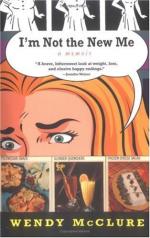Physically, General Harrison has been described as “about six feet high,” straight and rather slender, and of “a firm, elastic gait,” even in his last years. He had “a keen, penetrating eye,” a “high, broad and prominent” forehead, and “rather thin and compressed lips.”
[Illustration: ANNA SYMMES HARRISON, WIFE OF PRESIDENT WILLIAM HENRY HARRISON, AND GRANDMOTHER OF PRESIDENT BENJAMIN HARRISON.
From a painting in possession of the Harrison family.]
Mrs. Harrison was not with her husband at his death, and never became an inmate of the White House. For that reason there hangs on its walls no portrait of her, among those of the various ladies of the mansion. She was the daughter of John Cleves Symmes, a scion of the Colonial aristocracy. She loved better than the excitement of social life in Washington the domestic peace of her North Bend home and the society of her thirteen children, growing up in usefulness and honor. In her youth she had been a great belle, and she remained a beautiful woman even in her declining years. She was educated in that first fashionable school for young women in America founded by Isabella Graham in the city of New York. A sister, Polly Symmes, was also a famous beauty. They went together to share their father’s fortunes in the unsettled West, and both found their fates in the hand of the Miamis. Polly married Peyton Short, who became a millionaire.
Mrs. Harrison had been detained by illness from going with her husband to witness the proudest event of his life, his inauguration; and she had purposed following him to Washington later in the spring, when the weather should be more favorable for the long, wearisome journey by stage-coach. But, alas! before the spring fully opened, instead of following him to Washington she was following his body to its silent, stone-walled tomb, overlooking the wide sweep of the Ohio southward. This noble woman lived to be eighty-nine and to see her grandson, Benjamin Harrison, now ex-President, a general in the Union army. She retained to the last much of her beauty and that sweetness of disposition which has endeared her memory to those of her blood who knew her best. She sleeps by the side of her husband in the old vault at North Bend.
The Cincinnati statue of General Harrison is the work of L.T. Rebisso, who made the statue of General McPherson which stands in one of the circular parks in Washington, and the equestrian statue of General Grant for the city of Chicago. Its cost, which, exclusive of the pedestal, is twenty-seven thousand dollars, is paid by the city. Mr. Rebisso has given a portrayal of Harrison unlike any of the more familiar pictures. These usually present a decrepit old man, from whose eye have vanished that fire of youth and flash of soul which made Harrison a leader of men. The Rebisso statue, as will be seen by the reproduction of it given herewith, presents a soldier in the full flower of vigorous manhood. And this conception is no mere ideal of fancy, but is taken from a portrait painted in 1812, which now hangs in the house of a grandchild of General Harrison near the old North Bend homestead.




